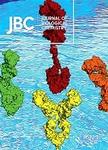版权所有:内蒙古大学图书馆 技术提供:维普资讯• 智图
内蒙古自治区呼和浩特市赛罕区大学西街235号 邮编: 010021

作者机构:Katholieke Univ Leuven Fac Med Div Biochem B-3000 Louvain Belgium Katholieke Univ Leuven Fac Med Lab Expt Med & Endocrinol B-3000 Louvain Belgium
出 版 物:《JOURNAL OF BIOLOGICAL CHEMISTRY》 (生物化学杂志)
年 卷 期:2000年第275卷第16期
页 面:12298-12305页
核心收录:
学科分类:0710[理学-生物学] 071010[理学-生物化学与分子生物学] 081704[工学-应用化学] 07[理学] 08[工学] 0817[工学-化学工程与技术]
主 题:结合部位 DNA/代谢 增强子元件 遗传学/遗传学 HeLa细胞 诱变 点突变 启动区 遗传 受体 雄激素/代谢 构效关系 转录 遗传 动物 人类 小鼠
摘 要:The androgen and glucocorticoid receptors recognize identical DNA motifs, leaving unanswered the question of how steroid specificity of transcriptional regulation is established in cells containing both receptors, Here, we protide evidence that subtle differences in low affinity DNA recognition might be a crucial element in the generation of steroid-specific responses. Here we identify simple hormone response elements in the mouse sex-limited protein enhancer and the human secretory component androgen response unit to be essential for the androgen specificity of both enhancers. We describe specific in vitro binding to these motifs by the DNA-binding domain of the androgen but not the glucocorticoid receptor. Both elements can be considered partial direct repeats of the 5 -TGTTCT-3 core binding motif. In addition, we show that specific point mutations in their left half-sites, essentially changing the nature of the repeats, strongly enhance the glucocorticoid sensitivity of the respective enhancers, whereas they have no effect on their androgen responsiveness. Accordingly, these mutations allow specific binding of the glucocorticoid receptor DNA-binding domain to both elements in, vitro. With these experiments, we demonstrate that differential recognition by the androgen receptor of nonconventional steroid response elements is, at least in some cases, an important mechanism in androgen-specific transcriptional regulation.